By William Pearce
Although not readily apparent at the time, Curtiss-Wright’s Airplane Division (Curtiss) was already in a state of decline at the start of World War II. The company’s final two truly successful aircraft, the P-40 Warhawk fighter and C-46 Commando transport, had already flown. While the Curtiss SB2C Helldiver carrier-based dive bomber would achieve some success toward the end of the war, its development was prolonged and plagued with issues, and the aircraft was never liked by its pilots and crews. Throughout the war years, Curtiss continually strove to develop world-beating aircraft but only managed to build one dead-end prototype after another. A brief glimmer of hope lay in the last model of the P-40, the P-40Q (Curtiss model 87X).
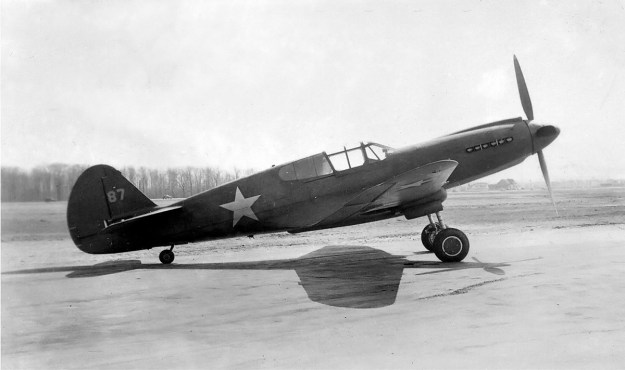
The Curtiss XP-40Q-1 (42-9987) with its standard canopy and sleek nose. Note the scoop for the engine air intake above the cowling.
XP-40Q development was initiated by 1943. The goal was to improve the P-40 to equal or surpass the performance of newer fighter aircraft. It was thought that the improved performance of the P-40Q would justify the aircraft entering production, and its similarities with P-40s then being produced would minimize tooling and production delays. In addition, there would be some part interchangeability with older P-40 aircraft, and current P-40 pilots and crews would be familiar with the new aircraft and its systems.
Three XP-40Q prototypes were built; their origins and histories have always been a point of disagreement between sources. All XP-40Qs were built up from other P-40 airframes. They all had only four .50-cal machine guns with 235 rpg. All of the XP-40Q aircraft were powered by two-stage supercharged Allison V-1710 engines and a four-blade propeller.

Another view of the XP-40Q-1. Note the radiators and oil coolers mounted in the wing center section.
The XP-40Q-1 was the first aircraft, and it was built in 1943 from a P-40K-10 (serial 42-9987) that had been damaged in a landing accident on 27 January 1943. The Q-1 was painted olive drab and had the standard P-40 wing and canopy. The nose of the aircraft was lengthened to accommodate the V-1710-101 (F27R) engine. At 3,200 rpm, the -101 engine produced 1,500 hp (1,119 kW) at 6,000 ft (1,829 m) and 1,325 hp (988 kW) for takeoff. The Q-1’s engine air intake was positioned above the cowling. The radiator and oil cooler were moved from the P-40’s iconic chin location to the wing center section, just below the fuselage (similar to the XP-40K). The XP-40Q-1 had a 37 ft 4 in (11.4 m) wingspan and was 35 ft 4 in long (10.8 m)—about 2 ft (.6 m) longer than a standard P-40.
The Q-1’s first flight reportedly occurred on 13 June 1943 from the Curtiss plant in Buffalo, New York. It is not clear if the aircraft suffered another accident, or if Curtiss was unhappy with its configuration and decided to modify it further. Regardless, by November 1943, the Q-1 had been modified and redesignated XP-40Q-2. The aircraft’s rear fuselage was cut down and a bubble canopy installed. Engine coolant radiators were positioned in the wings just outboard of the main gear. The oil cooler and engine air intake were relocated to the classic P-40 chin position, but the scoop was shallower and more elegant. The Q-2 retained the olive drab paint.

The Curtiss XP-40Q-2 (still 42-9987) after modification with a bubble canopy. The oil cooler and engine air intake have been relocated to the scoop under the engine. The coolant radiators have been moved outside of the main gear. The wings are still the standard P-40 wings, but they were later clipped by about one foot.
Still utilizing the -101 engine, the Q-2 was noted for having excellent visibility and handling. The aircraft had balanced controls and was very maneuverable, with a tight turn radius. Capt. Gustav Lundquist had evaluated the Q-2 and judged it to be the best P-40 he had flown; he recommended that further flight testing should be conducted. In December 1943, the Air Materiel Command recognized the XP-40Q-2’s performance and recommended that two additional prototypes be constructed.
Reportedly, the Q-2 was delivered to Eglin Field, Florida for testing in January 1944, but it was back at the Curtiss plant in Buffalo, New York in March for a series of flight tests. By this time, the Q-2 had its wingtips clipped about one foot each, and a V-1710-121 (F28R) engine was installed. The -121 produced 1,800 hp (1,342 kW) with water injection at 3,200 rpm up to 20,000 ft (6,096 m) and 1,425 hp (1,062 kW) for takeoff.
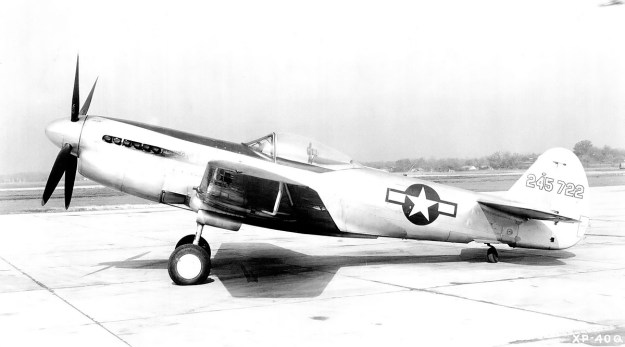
The XP-40Q-2A (42-45722) looking very much like the XP-40Q-2 but with clipped wings. This aircraft would change little throughout its existence.
A flight evaluation from April 1944 again noted the XP-40Q-2 as superior to all other P-40s and a very good aircraft overall. The XP-40Q-2 had a 35 ft 3 in (10.7 m) wingspan and was 35 ft 4 in (10.8 m) long. With full engine power at 3,000 rpm and water injection, the aircraft achieved 420 mph (676 km/h) at 15,000 ft (4,572 m) and had a maximum climb rate of 4,410 fpm (22.4 m/s) at 5,000 ft (1,524 m). At 3,200 rpm and with water injection, maximum speed was 422 mph (679 km/h) at 20,500 ft (6,248 m), and the climb rate increased by as much as 530 fpm (2.7 m/s) depending on altitude. However, the 3,200 rpm engine speed was only shown to offer an advantage between 12,000 and 33,000 ft (3,658 and 10,058 m). With just military power, the Q-2 recorded a speed of 407 mph (655 km/h) at 24,000 ft (7,315 m) and a climb rate of 3,210 fpm (16.3 m/s) at sea level. The aircraft could climb from sea level to 20,000 ft (6,096 m) in 4.8 minutes, 30,000 ft (9,144 m) in 8.9 minutes, and 39,000 ft (11,887 m) in 26.1 minutes. The Q-2’s service ceiling was 39,000 ft (11,887 m), and it had a gross weight of 9,000 lb (4,082 kg). The aircraft’s range was 700 miles (1,127 km).
The Q-2 was damaged when it nosed over after a test flight on 24 March 1944. The aircraft was repaired and then sent to Wright Field, Ohio in mid-1944. The aircraft was damaged again when it ground looped while landing on 31 July 1944. It is not clear if the aircraft was repaired or if the damage was too severe.

This image of the XP-40Q-2A illustrates the clipped wings. Note the size of the bubble canopy and how to could be a bit smaller. The four .50-cal wing guns are easily seen. The XP-40Q was definitely a nice looking aircraft.
The next aircraft was the XP-40Q-2A. It was built from the initial P-40K-1 (serial 42-45722) that had been converted to the (unofficial) XP-40N. During the XP-40N conversion, the aircraft had a bubble canopy installed. This modification predated and served as the template for the bubble canopy that was installed on the Q-2.
The Q-2A was very similar to the final configuration of the Q-2—with a bubble canopy, clipped wings, and -121 engine. However, some modifications to the cockpit and canopy were made, and automatic radiator and oil cooler shutters were added. The Q-2A had a natural metal finish.
The Q-2A’s first flight occurred prior to the end of March 1944. The aircraft was plagued with engine trouble that resulted in a number of forced landings. The Q-2A spent most of its test time down for repairs. As a result, the Army Air Force (AAF) focused on the next aircraft, the Q-3, and loaned the Q-2A to Allison for engine tests. The Q-2A most likely had the same specifications and performance as the -121-powered Q-2.
The XP-40Q-3 was the last aircraft in the series. The Q-3 was built in early 1944 from a P-40N-25 (serial 43-24571) and was the only XP-40Q actually classified as such by the AAF. The aircraft was very similar to the XP-40Q-2A except for some refinements to the canopy and windscreen. The canopy was a bit smaller, and the flat windscreen was longer and more angled than the windscreen used on the preceding aircraft. Overall, the changes improved pilot visibility. The Q-3 had a -121 engine and a natural metal finish.
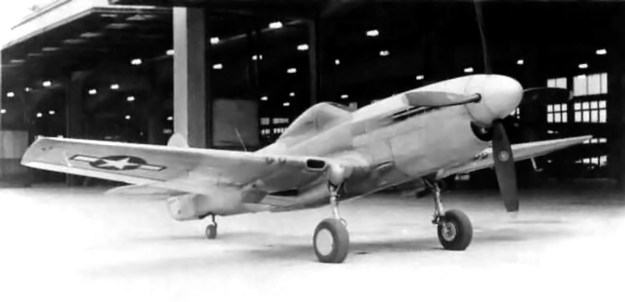
The last of the Curtiss P-40Qs: the XP-40Q-3 (43-24571). This aircraft later had anti-glare paint applied to the upper cowling, its serial number painted on the the tail, and “12” painted on the chin scoop. Note the radiator air inlets in the wings.
Delivered to AAF in April 1944, the Q-3 suffered an engine failure during an early test flight. The aircraft was moderately damaged in the subsequent forced landing. At this time, other aircraft with superior performance were available, and there was no AAF interest in repairing the Q-3 because there was no need for a P-40Q. It is doubtful that much performance testing was conducted on the Q-3, but the results should have been similar to those of the Q-2.
In March 1946, Allison still had the XP-40Q-2A (the second XP-40Q) when the AAF declared the aircraft as surplus. It is not clear if Allison purchased the aircraft and then later resold it or if it was sold as surplus directly from the AAF. Regardless, Joe Ziegler acquired the aircraft, and it was registered as NX300B. Given race number 82, the Q-2A was entered in the 1947 Thompson Trophy Race (run on 1 September 1947), but it did not qualify. Ziegler started the race anyway and was running in fourth place when the engine caught fire after just completing the 13th lap. Ziegler pulled up and off the course and bailed out of the Q-2A. Zeigler suffered a broken leg, and the Q-2A was destroyed.
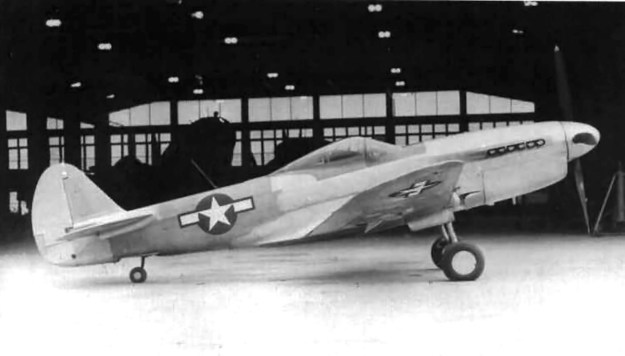
This view of the XP-40Q-3 illustrates the revised canopy compared to the XP-40Q-2A. Note the oil cooler exit doors on the cowling just in front of the wing.
The story of the XP-40Q aircraft is a confusing one involving only three airframes but somewhere around eight designations and a number of different configurations. The P-40Q was one of the finest fighters Curtiss ever built, but the aircraft was two years or so too late. Its performance and capabilities were matched or exceeded by other aircraft already in service. Even if the P-40Q airframe had been ready two years earlier, the two-stage Allison engines would not have been ready, as they were still having developmental trouble in 1944. Sadly, the XP-40Q scenario was played out again and again as Curtiss tried to create another successful aircraft but only managed to produce aircraft that were ill-timed and outclassed.
Note: There is no indication that any of the XP-40Q aircraft used any type of a laminar flow wing. There is also no indication that any XP-40Q information was passed from Curtiss to North American Aviation (NAA) during the NA-73X’s (P-51’s) development. Not only are the two aircraft different in almost every way, there is no part of their separate developmental timelines that coincide. NAA did purchase some information from Curtiss at the request of the British government, but that information pertained to the XP-46 and arrived after the NA-73X was already designed.

The XP-40Q-2A seen at Cleveland, Ohio for the Thompson Trophy Race in 1947. Other than some paint, including its registration and race number, the aircraft had changed little since its AAF days. It is truly unfortunate that the aircraft would soon be destroyed as a result of an engine fire.
Sources:
– Curtiss Fighter Aircraft by Francis H. Dean and Dan Hagedorn (2007)
– Vee is for Victory by Dan D. Whitney (1998)
– U.S. Experimental & Prototype Aircraft Projects: Fighters 1939-1945 by Bill Norton (2008)
– Memorandum Report on P-40Q Airplane, AAF No. 42-9987 by Capt. Gustav E. Lundquist (2 November 1943) via www.wwiiaircraftperformance.org (1.1 MB)
– Flight Tests on the Curtiss XP-40Q-2, AAF No. 42-9987 by Lt Norman A. Krause (5 April 1944) via www.wwiiaircraftperformance.org (10.9 MB)

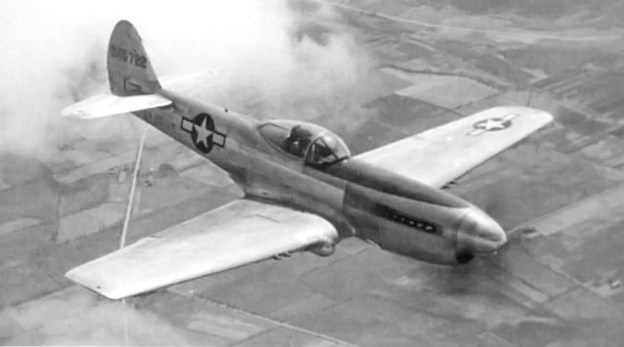
The defective engine scandal at the Lockland, OH plant wouldn’t have helped Curtiss-Wright’s reputation either!
I believe the British commission forced NAA to buy data from Curtiss Wright for the XP-46 project, not the XP-37. Whilst the -37 at least led to the passable -40, the XP-46 was a dud.
I do wonder if there is some flow from the XP-60 design to the first Q.
The C model Mustang tested at up to 453 mph with comparable power to the Q.
The comment on revs and performance is very interesting. I recently came across info related to tests in GB during the war — sometimes increasing revs on high performance fighters did not increase speed because the prop compressibility losses increased so rapidly with prop velocity.
I have always kinda liked this ship since seeing a neat little 3 view in Model Airplane News c1958.
Hello Bernard,
Yup, XP-46. That one snuck past me but has been corrected now. The slower-prop-faster-speed is a known phenomenon in the air race world as well. The fast R-3350-powered machines need the EA-2 “slow nose case” that was only used on the L-1649 Starliners (R-3350-988TC18EA-2 Turbo Cyclone engines). Only 283 of those engines/cases were built, and maybe 19 cases exist today. The EA-2 cases have a .355 reduction, rather than the much more common .4375 reduction. The efficiency of the prop drops off at higher rpm and makes the aircraft slower. This also happened with Tsunami: the aircraft went faster when the power was pulled back a bit.
Thank you for your post.
That’s very interesting. (The 1649 was a gorgeous looking plane, though I have never seen it in person)
Bernard
Nice article on the XP-40Q, along with the images showing the development are nice indeed.
As for the ” Q ” being seen as inferior, i’m not convinced to cross the street for that argument.
The BF109G-6 386 MPH @ 22,640 FT, FW190A8/N 408 MPH @ 20,670 FT ( with GM 1 boost)
FW190D ‘ DORA ‘ 426 MPH @ 21,650 FT, P-51D 425 MPH @ 25,000 FT, XP-40Q 422 MPH @
20,500 FT. I’d say,that looking at the numbers, the ‘Q’ was on a pretty even keel ! In an engagement with any of the above LW a/c, would interesting to say the least, given the ‘Q’
had a good driver. ( which wouldn’t have been hard to find ) The ” Brass ” should have given the green light to the P-40Q, yet they chose not to. Makes one wonder W.T.H were they thinking ? The P-40N was considered the best of the breed. Looking at the test data, what was
the XP-40Q then ? It was vastly superior to earlier variants of the Hawks lineage, and surely
would have been quite capable of holding her own. Curtiss and Allison both made a concentrated effort to improve the P-40, and for all intensive purposes, i’m of the belief they
succeeded, only to have the ‘ Brass ‘ remain ignorant and blind to looking a gift horse in the
mouth, and they dropped the bloody apple ! The XP-40Q-3 she’s drop dead gorgeous !
They got it right on that one ! ( can you tell i admire P-40’s )
Hello Arrow,
Thank you for your comment. The position I took in the article was that in 1944, there was no point to put the P-40Q into production because the P-51 and P-47 were already doing the job. It was not that the P-40Q wasn’t a match for the enemy, it was that it did not offering much, if anything, over the P-51 and P-47. The XP-40Q was certainly an aircraft with great performance and excellent looks.
Regards,
Bill Pearce
Hi Bill Agreed, as painful as it is. I believe the ” Jug ” was very effective at curtailing the LW.
By mid ’44, many of the top LWP’s were dispatched to see Jesus ! Curtiss fell short in their
attempt. They were on the right track, even though they were a day late, and a dollar short.
Had Curtiss only had an ” epiphany ” in mid ’41 – early ’42 the latest…. The XP-40Q was an
all to brief but interesting page in the Hawks story. The P-40’s place in history is firmly cemented. Happy Easter, Arrow.
The problem with Curtiss Wright was upper management, dominated by bankers and accountant. The same issue led Frederick Rentschsler to leave Curtiss Wright and found Pratt and Whitney, and caused Donovan Berlin to depart after designing the P-36 and P-40. Upper management wasn’t interested in innovation and wouldn’t invest in it.
X2 on John’s statements. My late Father, Paul Taylor was a lead engineer on the P-40E program and he eventually made his way up the ladder to be VP of Research for the Buffalo, NY Curtiss plants. When asked why Curtiss left the aircraft business, his statement was “The damned bean counters in the accounting department milked every buck out of the customers and when the War ended they took the money and ran”.